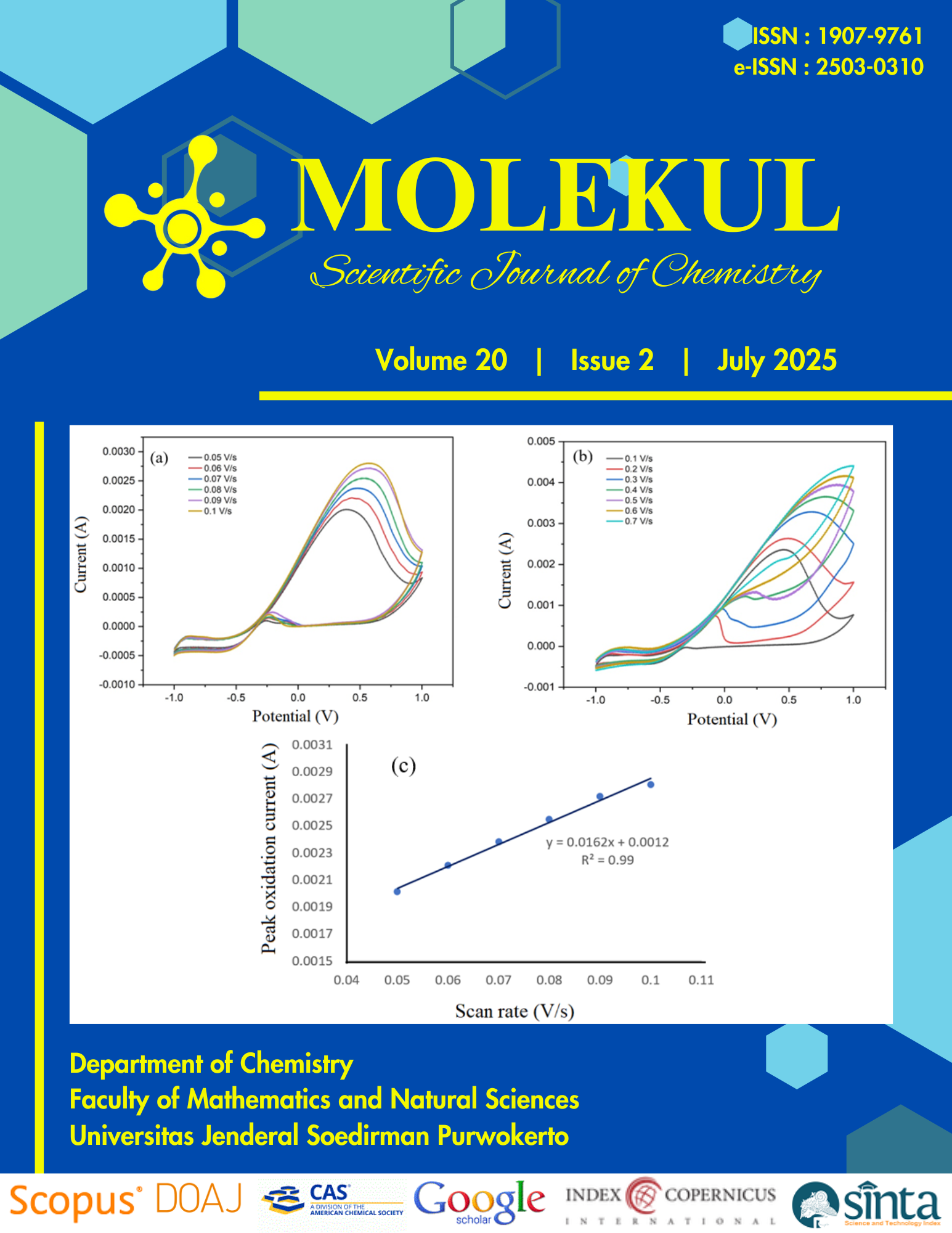Metabolomic Profiling LC-MS Based Bioactive Compound of Sonneratia alba, Antioxidant Activities and Its In-silico molecular docking Studies
Abstract
ABSTRACT. Mangrove Perepat (Sonneratia alba) plants have various potentials that need to be utilized optimally because they have varying bioactive compound content. A comprehensive exploration of secondary metabolite compound content and plant bioactivity based on metabolomics and in-silico molecular docking is needed to see the effects of single or multiple compounds. This study aimed to obtain a profile of medicinal compounds from Perepat leaves as antioxidants. Extraction was carried out using five gradients of Ethanol: Water concentration. EP1 (water), EP2 (25% Ethanol), EP3 (50% Ethanol), EP4 (75% Ethanol), EP5 (100% Ethanol). The research was carried out through extraction, antioxidant determination, metabolomics, and molecular docking. Exploration data showed that increasing ethanol concentration increased phenolics, flavonoids, and antioxidant activity. EP5 has the highest total phenolics and flavonoids of 24.978 mgGAE/g and 42.97 mgQE/g, respectively, with an IC50 value of 8.263 ppm. Docking analysis of 37 test compounds identified 12 compounds with low binding energy, ranging from -7 to -9 kcal/mol, with the NADPH oxidase protein receptor (PDB ID: 2CDU). These compounds include kaempferol-3-rhamnoside, meperidine, apigenin-7-O-glucoside, 2-keto benzothiazole 54, methyl propanoic acid, salicyloylaminotriazole, salicylihalamide A, and gibberellin A7. Our findings suggest that S. alba extract holds potential for further exploration as a natural antioxidant source.
Keywords: Antioxidant; In-silico; Metabolomics; S. alba
Authors agree with the statements below:
- Authors automatically transfer the copyright to the MOLEKUL journal and grant the journal right of first publication with the work simultaneously licensed under a Creative Commons Attribution 4.0 International License (CC BY 4.0).
- Authors are able to enter into separate permission for the non-exclusive distribution of the journal's published version of the work (e.g., post it to an institutional repository or publish it in a book), with an acknowledgment of its initial publication in this journal.













